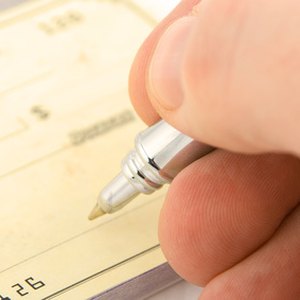
When you order checks from your bank, your first job is to inspect them when they arrive. You can probably recognize the funny-looking numbers at the bottom of your checks as your account and check numbers. But what are those nine digits to the left of your account number? That's the bank routing number, and the American banking system depends on it to move money.
Why Routing Numbers Are Important
The American Bankers Association (ABA) first formulated routing numbers in 1910. They identify the specific financial institution (e.g., bank, credit union, thrift, etc.) responsible for paying or receiving payments from checks, wire transfers, direct deposits, or other negotiable instruments. In other words, the routing numbers tell banks (and the supporting check-processing organizations) where to send the money.
To be eligible for a routing number, an organization must be one of these:
- a bank that maintains an account at the Federal Reserve Bank, including non-bank subsidiaries and holding companies
- a unit of the U.S. federal government
- a unit of a state government
- a clearinghouse and independent processor
- an issuer of traveler's checks
If a check was misprinted with the wrong routing number, money meant for a payee could go elsewhere or, more likely, the check would be returned unpaid.
Understand Routing Number Anatomy
The nine-digit ABA routing number in the bottom left corner of your personal checks, represented by XXXXYYYYC, is composed of the following parts:
- XXXX: the Federal Reserve routing transit number
- YYYY: the ABA institution identifier
- C: a check digit for validation
The routing symbol's first two numbers help identify the type of institution associated with a check or electronic transaction, such as a governmental agency, a bank or a traveler's check issuer. The remaining numbers further identify specific financial institutions.
Know Where to Look Up Routing Numbers
The ABA offers a free routing number lookup service to individuals who need to find their financial institution's routing number. You can search for a routing number by entering a bank name, city, state and ZIP code. You are limited to two lookups per day and 10 per month.
You can also do a reverse lookup by entering a routing number to find the name and address of a financial institution including all of its branches. For example, if you enter a nine-digit number, 072000326, you'll retrieve hundreds of addresses for the branches of the U.S. bank, JPMorgan Chase, organized by state.
Protect Your Banking Information
A hacker can't attack your account with just a routing number. Nonetheless, keeping your checking account information private is good, as a hacker might find separate references to your routing number and checking account number. This might provide the miscreant with enough information to access your bank account and drain it.
To be safe, don't put any part of your bank account number into an email or electronic message. It's also critically important to physically safeguard your checkbooks and canceled checks. If you no longer need a canceled check, you should destroy it (think paper shredder, scissors, flames, etc.). Keep your checkbooks and bank statements in a safe location (i.e., in a safe or a locked drawer).
With the advent of online banking, many consumers no longer use paper checks, relying instead on debit cards and electronic payments. If you keep your account information on your computer, consider putting it into an encrypted file with a read lock. Failure to protect your bank account numbers can lead to identity theft that will substantially disrupt your personal finances.
If you feel that you've been compromised, contact your bank immediately and close the account. Remedying identity theft can be costly and time-consuming, so protecting your banking and other personal information is essential.
References
Resources
Writer Bio
Eric Bank is a senior business, finance and real estate writer, freelancing since 2002. He has written thousands of articles about business, finance, insurance, real estate, investing, annuities, taxes, credit repair, accounting and student loans. Eric writes articles, blogs and SEO-friendly website content for dozens of clients worldwide, including get.com, badcredit.org and valuepenguin.com. Eric holds two Master's Degrees -- in Business Administration and in Finance. His website is ericbank.com.

